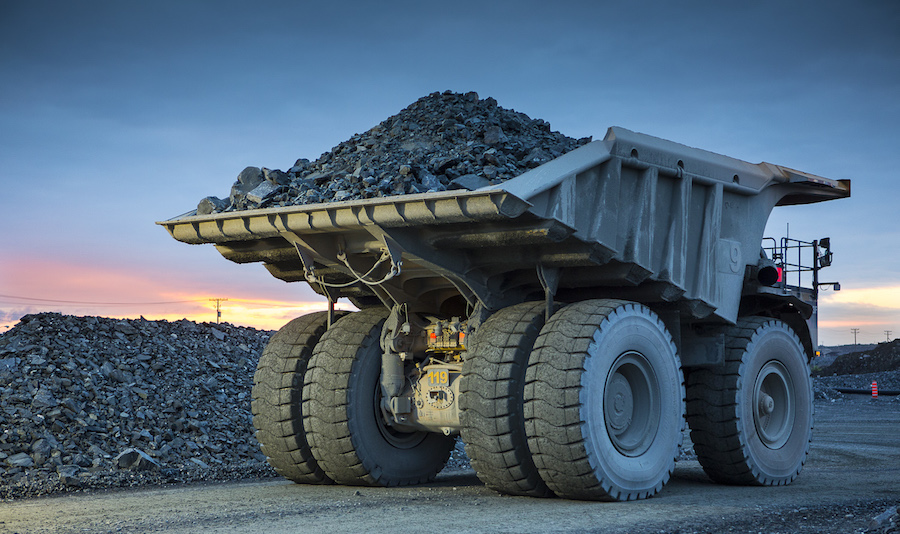
Canadian miners minimized disruption at the start of the covid-19 pandemic by acting quickly and decisively, leaving many in a good position to benefit from rising commodities prices, particularly gold, copper and iron ore.
Over the past 18 months, companies streamlined communications, adjusted on-site work schedules to limit potential exposure, introduced new protective gear, directed technical and support staff to work from home and collaborated with industry associations to share information to better protect people from the virus. They also supported local communities through donations and rapid-testing programs.
This agility helped Canadian miners to benefit from metals prices that begun to rise last year and have generally remained strong in 2021, a new PwC report shows. Canada’s mining sector has continued to thrive after the initial uncertainty of the pandemic gave way to resumed operations and a recovery for commodity prices that has delivered gains to investors throughout much of 2020 and into 2021, PWC reports.
Gold hit record highs above $2,000 per ounce in August 2020 before settling down at an average $1,771/oz for the year, a substantial increase from $1,394/oz it averaged in 2019. The spot price for the precious metal reached a similar level last month —$1,756.95 per ounce.
2021 has already seen some key mergers in the sector, including the recent $10 billion tie-up between gold miners Agnico Eagle Mines and Kirkland Lake Gold.
The standout performer among commodities has been copper, a key ingredient in the ongoing shift to renewable energy infrastructure. Prices for the metal averaged $2.81 a pound last year, compared to $2.72/lb in 2019, and have continued their upward trajectory this year, hitting a record high in May.
The spot price for the industrial metal hit $4.06 a pound last week and the PwC analysts expect the strong pricing environment for copper to continue amid high demand for the metal.
“Canadian miners have built on their successes in navigating the covid-19 pandemic to continue growing in 2021,” Kevin Chan, National Mining Leader, PwC Canada. “With cash on hand and conditions looking favourable for further growth, now is the time to act boldly in embracing the next stage of change and transformation.”
Companies will be faced with a renewed stakeholder focus with a decidedly different flavour, Chan says. It’s not just how you mine but what you mine, how it is processed and how it is used further down the supply chain.
The authors of the report highlight four issues that should be on Canadian miners’ agenda in the year to come.
One is how to accelerate the adoption of transformative technologies, such as artificial intelligence, data analytics and cloud computing.
The second element relates to playing a key role in the shift to a low-carbon economy and incorporate environmental, social and governance (ESG) principles into their strategies.
Mining companies should also consider how to create value in a market that is ripe for consolidation, as recent mergers including Fortuna Silver – Roxgold, Yamana Gold – Monarch, Endeavour Mining — Teranga, Equinox Gold – Premier, and Agnico Eagles — TMAC Resources have shown.
Finally, the report calls on Canadian miners to evaluate the possibility of geopolitical changes amid a complex business landscape that’s creating both challenges and new opportunities for the industry.
Peru’s new socialist government swept to power pledging to strike a new deal with the copper mining sector and redistribute profits to Andean communities near major projects. While President Pedro Castillo has not done anything yet, community expectations are building up, with two major mines, MMG’s Las Bambas and Glencore’s Antapaccay being subject of roadblocks in the past few days.
“There are increasing risks in developing markets as well as in traditionally mining-friendly jurisdictions that are now leaning towards nationalization of resources and stricter controls,” Robert Johnston, managing director of global energy and resources, Eurasia Group a political risk consultancy, said during the report presentation.
Mexico’s leftist President Andrés Manuel López Obrador submitted to Congress last week a bundle of proposed reforms, which include keeping lithium in the government’s hands.
The trend is not limited to Latin America. From Burkina Faso to Zambia, and from Mongolia to the Philippines, countries across Africa and Asia-Pacific are asserting new fiscal demands on investors in the mining sector.
Zambia’s mines minister said on Wednesday that the government had been reviewing the mining tax framework with key stakeholders to design a regime that would be stable, predictable and competitive.
There seems to be a common theme, Johnston said, which is to try obtaining more benefits from the resources these countries own. The expert, however, believes most countries will choose a cautious approach as they depend on their resources.
“The challenge will be to develop a sustainable fiscal regime that will help increase revenues when prices are high without discouraging investment in the sector,” he concluded.